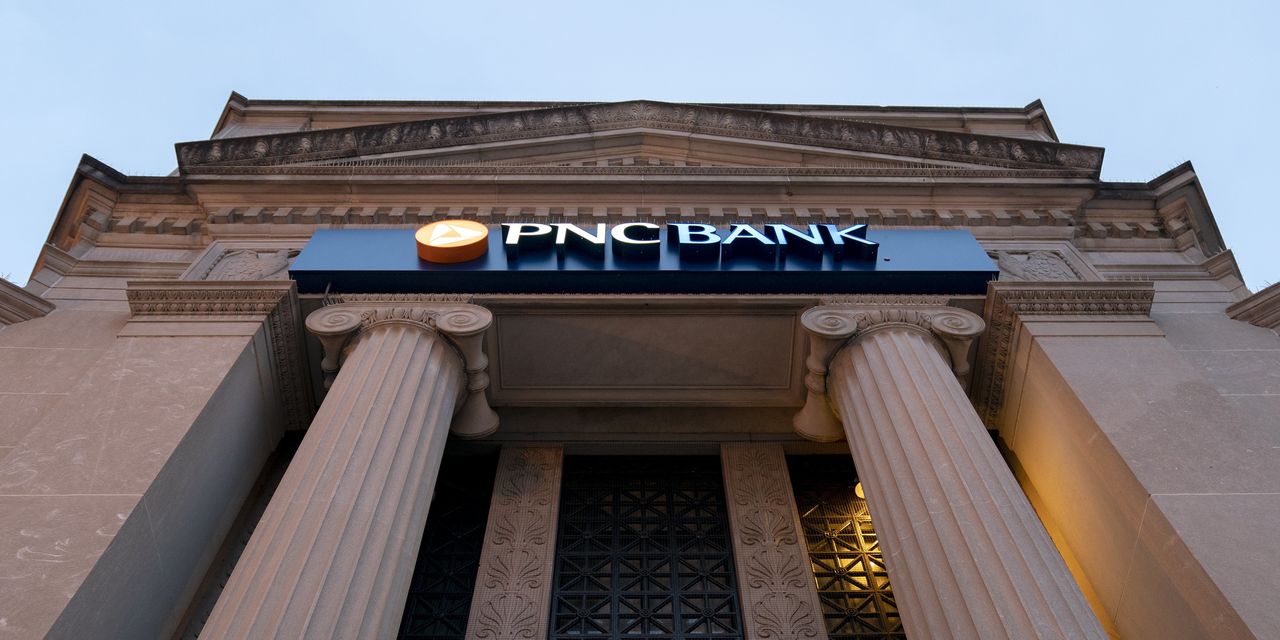
There’s an urge to merge among U.S. banks right now. Investors might not need to run for cover.
It is usually pretty pleasant for a bank stock you own to be acquired, but often not as nice to own the one doing the acquiring. There is typically agreement that size and scale are beneficial. One potential investor concern is that a merger might be driven in part by executive compensation since bigger bank bosses tend to be paid more, notes Autonomous Research analyst Brian Foran. It can also be tough to independently measure whether cost-savings projections actually materialize partly because conditions for banks, such as interest rates or the direction of markets, are constantly in flux. As for the stocks: A recent McKinsey & Co. study found that among 58 midcap bank mergers from 2010 to 2021, only 17 merged institutions’ returns outperformed peers over the two years postdeal.
Still, bank M&A is surging this year, on track to be the biggest for such deals since 2008 by value, The Wall Street Journal recently reported. Recent deals have exhibited a typical stock pattern: For deals over $1 billion since last October through late September, shares of the acquiring banks had often fallen versus the SPDR S&P Regional Banking ETF, according to Autonomous. The median buyer stock underperformed the index by 6% from the time the deal was announced to when it closed or to the end of that period.
But that isn’t the whole story. Some recent big buyers have seen their shares perform well, even after the mergers were completed, Autonomous noted, such as when SVB Financial closed on Boston Private, PNC Financial Services bought BBVA’s U.S. banking arm, and Huntington Bancshares completed its deal for TCF. Those acquirer banks have outperformed the regional-bank ETF by an average of about 8% since their deals closed.
Perhaps there is opportunity, then. A key consideration is that bigger banks are no longer generally trading at a valuation discount to smaller ones, which means acquiring a smaller bank can be relatively cheaper and more accretive. The forward price-to-earnings ratios of relatively larger S&P 500 regional banks are currently higher than that of the wider group of regional banks in the S&P Composite 1500 and in the S&P Small Cap 600, according to FactSet data.
Investors seem to be enamored with size. There are many reasons why: Bigger banks are usually more diversified across fee-generating businesses such as mergers & acquisitions advisory or wealth management, which are doing very well right now. Smaller banks often generate more of their income from lending and are therefore usually more sensitive to rates. Smaller banks also might have higher deposit betas, which mean that when rates do rise, their funding costs will go up faster than those of bigger banks. The flood of deposits since last year has tilted toward the biggest banks.
Low rates and tepid loan growth may put the stocks of even pretty big banks under some pressure for now. But investors aiming at a longer time horizon might hope to see their banks make some smart deals in the interim.
Write to Telis Demos at [email protected]
Copyright ©2021 Dow Jones & Company, Inc. All Rights Reserved. 87990cbe856818d5eddac44c7b1cdeb8








